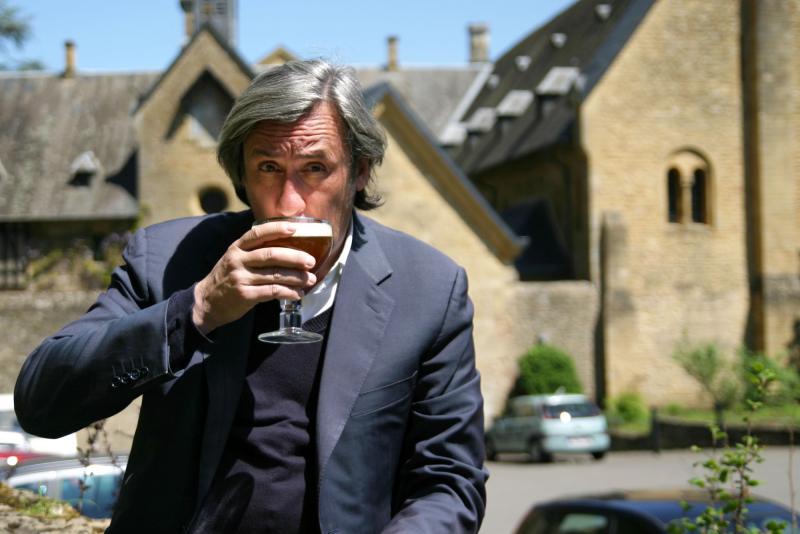High Art of the Low Countries, BBC Four | reviews, news & interviews
High Art of the Low Countries, BBC Four
High Art of the Low Countries, BBC Four
From the art of the tapestry to the sensuality of Rubens, this week we get the low-down on Flemish art

There was a time when the art of the Low Countries was considered to be very lowly and base indeed. It was the high art of Italy that counted if you were a person of culture and breeding. Not for you the carousing common folk of Jan Steen, or those watery flatlands of Van Goyen, touched with too much bleak realism. It was the arcadian Campagna of Claude – like Poussin a Frenchman but with the Rubicon flowing through his veins – that you looked to.
But that was all long, long ago, in the days when the Grand Tour didn’t allow for a quick stop-over and art-pillage in Leiden or Amsterdam, and when Sir Joshua Reynolds, who headed that new-fangled institute of the Royal Academy, instructed his young students to steer clear of the vulgar excesses of Dutch art. Artists, he believed, should not debase their talents by painting the everyday, but by painting mythology and History, with a capital H, which meant the mythologised history of ancient Rome (though he himself, aware no doubt of the irony, gained success and popularity by painting society portraits).
It focused on the south, since this was where all the exciting, really radical and innovative stuff was happening
But here’s the thing, of course. When we talk of the Low Countries we’re really considering some pretty fluid political geography. Belgium, which was Flanders, was part of the greater Netherlands, and the Netherlands only became two separate countries when the seven provinces that now all go under the name of Holland won independence from Spain in the 17th century. This heralded a great renaissance of cultural and intellectual activity which became known as the Dutch Golden Age.
Andrew Graham-Dixon’s excellent new three-part series begins much earlier than this. That fluid geography – “the shifting borders, the uneasy tribes, the nebulous labels” – was his starting point, as was fluid in a literal sense – the canals, which gave rise to the region’s great wealth as a trading centre in cloth, and the beer that was, and still is, brewed by Trappist monks. And it focused on the south, on Flanders, since this was where all the exciting, really radical and innovative stuff was happening.
The High Art of the Low Countries begins both with the art of the tapestry and the intricate, richly detailed art of the illuminated medieval manuscript. Because of the labour intensity of their production, tapestries were valued far more highly than painting, and the jewel-like detail and breath-taking precision of the illuminated manuscript greatly informed the concentration of detail in the work of later Flemish artists.
But it was the invention of oil paint that is truly ground-breaking about 15th-century Flemish art. Oil paint allowed artists to create an illusion of depth and light never before seen. It was an invention attributed to Van Eyck very early on – Vasari wrote of it – and though it’s probably not true, he was certainly the first artist to discover its true potential.
To examine the art of Van Eyck is exciting, heady stuff, and we were taken first to the artist’s magnificent multi-panelled Ghent altarpiece, a work that had once stunned people into believing the artist some sort of magician or necromancer. How could such convincing life be created with paint? Moving easefully through the 15th century – from Van Eyck’s contemporary Rogier van der Weyden, to Bruegel and Bosch – we ended this first episode with the Italianate Baroque of Rubens, and the sensual and extravagant art of the Counter-Reformation.
Graham-Dixon has certainly insight enough to capture the essence of what’s uniquely fascinating about the art of a particular culture, because he has a keen grasp of the wider culture that produced it. Next week, he’ll grapple the age that gave us Rembrandt and Vermeer, and though these two artists have hardly been neglected by TV art historians of late, I expect it’ll be good.
Add comment
The future of Arts Journalism
You can stop theartsdesk.com closing!
We urgently need financing to survive. Our fundraising drive has thus far raised £49,000 but we need to reach £100,000 or we will be forced to close. Please contribute here: https://gofund.me/c3f6033d
And if you can forward this information to anyone who might assist, we’d be grateful.

Subscribe to theartsdesk.com
Thank you for continuing to read our work on theartsdesk.com. For unlimited access to every article in its entirety, including our archive of more than 15,000 pieces, we're asking for £5 per month or £40 per year. We feel it's a very good deal, and hope you do too.
To take a subscription now simply click here.
And if you're looking for that extra gift for a friend or family member, why not treat them to a theartsdesk.com gift subscription?

Comments
"..the seven provinces that